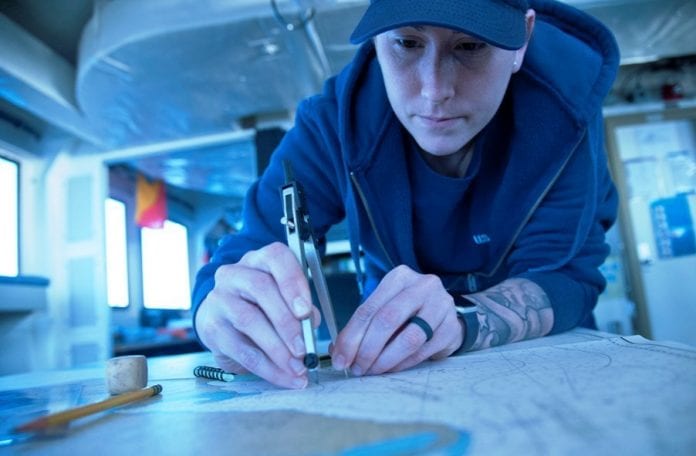
On its historic voyage from Sitka Alaska, to Baltimore, MD, the Coast Guard Cutter Maple passed through the Northwest Passage in early August, accompanied by the Canadian Coast Guard vessel Sir. Wilfrid Laurier.
The cutter, which departed Sitka on July 12, and is scheduled to arrive in Baltimore on Aug.23, is serving as a ship of opportunity to conduct scientific research in support of the Scripps Institution of Oceanography, Coast Guard officials said.
This transit is a coordinated effort with the Canadian Coast Guard, and planned activities reflect the long history of collaboration among the two Coast Guards, including under the 1988 Canada-US Agreement on Arctic Cooperation.
This summer marks the 60th anniversary of the three Coast Guard cutters and one Canadian ship that convoyed through the Northwest Passage.
Crews of the U.S. Coast Guard Cutters Storis, SPAR and Bramble, along with crew of the Canadian ice breaker HMCS Labrador, charted, recorded water depth and installed aids to navigation for future shipping lanes from May to September of 1957. All four vessels became the first deep-draft ships to sail through the Northwest Passage, which include several passageways through the complex archipelago of the Canadian Arctic.
“One of our primary missions during this transit is to provide scientific support,” said Lt. Cmdr. Patrick Armstrong, commanding officer of the Maple.
Maple is scheduled for a year-long dry dock in Baltimore this August for repairs and upgrades. It is exciting to transit the Northwest Passage with an opportunity to assist with research aimed at understanding various species in this remote part of the world,” he said. “Protecting life here begins with understanding it.”
The Maple crew has deployed a sonographic buoy used to record acoustic sounds of marine mammals and assisted the research scientist aboard the cutter in analyzing data retrieved from the buoys.
The crew used their buoy-tending skills and equipment to recover a high-frequency acoustic recording package (HARP) that is attached to the buoy.
The device was developed by the Whale Acoustics Laboratory at the Scripps Institution of Oceanography, and is used to record underwater sound in a broad range of frequencies, including sounds made by Arctic marine mammals. The crew also assisted the scientist’s in sampling zooplankton and measuring the properties of seawater at various depths and locations after a successful recovery and reset of the HARP.














